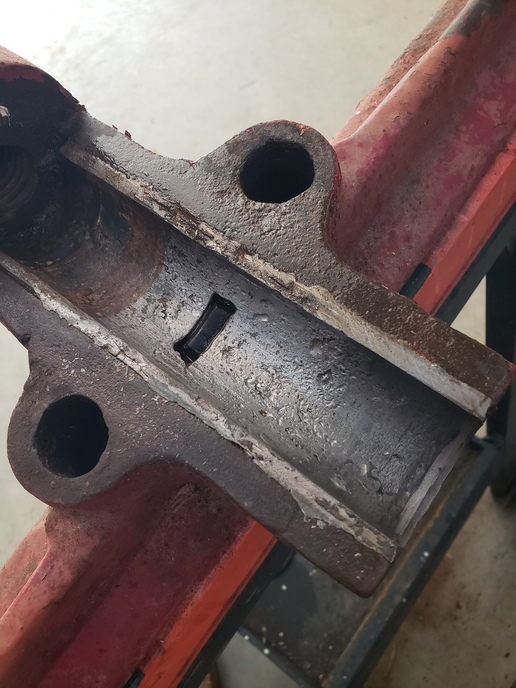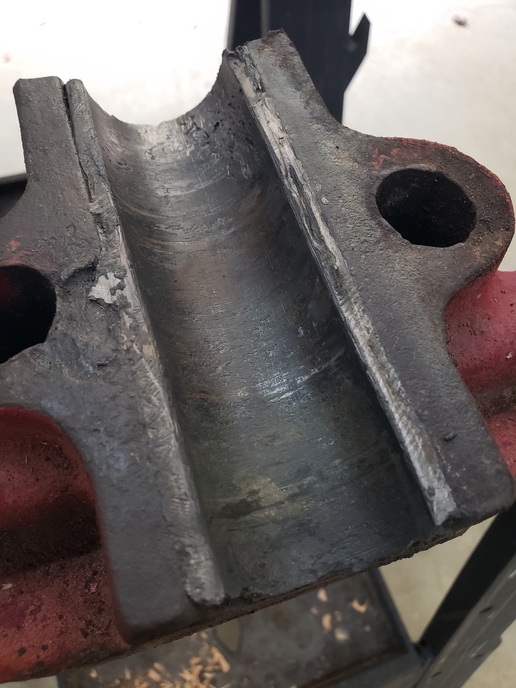Steve in VA
Well-known Member
- Location
- Natural Bridge Virginia
Richard G has been invaluable as I stumble along in restoring my Williams grist mill. He asked a question I can't answer: how are the babbitt bearings? Heaven knows I have no clue. I know babbitt in a theoretical sense so I throw my self on the mercy of the court.
This mill has 3 bearings. These 2 are incorporated into the frame so need to be looked at first. They seem to have minor pitting but no missing chunk or gouges. The upper halves are soaking in the parts washer. They have significant build-up of old, old lube. There were 2-3 layers of gasket between the halves so I conclude that they ran too far apart.
But, back to the issue at hand, how do I tell if these are ok to use?
The pics are not the best.the larger bearing that shows rust is where the end spacers rode that adjusted the distance between the stones.


This mill has 3 bearings. These 2 are incorporated into the frame so need to be looked at first. They seem to have minor pitting but no missing chunk or gouges. The upper halves are soaking in the parts washer. They have significant build-up of old, old lube. There were 2-3 layers of gasket between the halves so I conclude that they ran too far apart.
But, back to the issue at hand, how do I tell if these are ok to use?
The pics are not the best.the larger bearing that shows rust is where the end spacers rode that adjusted the distance between the stones.



